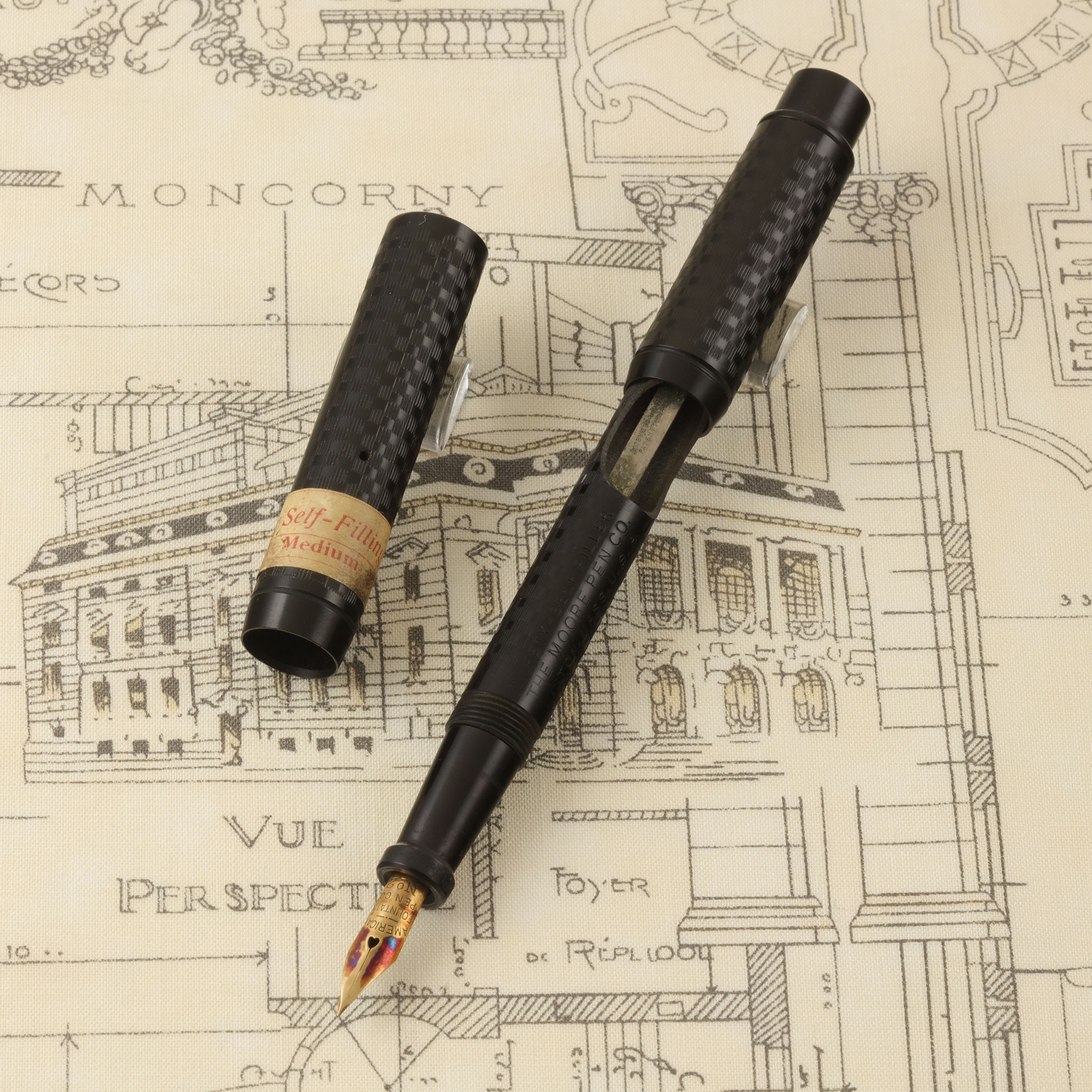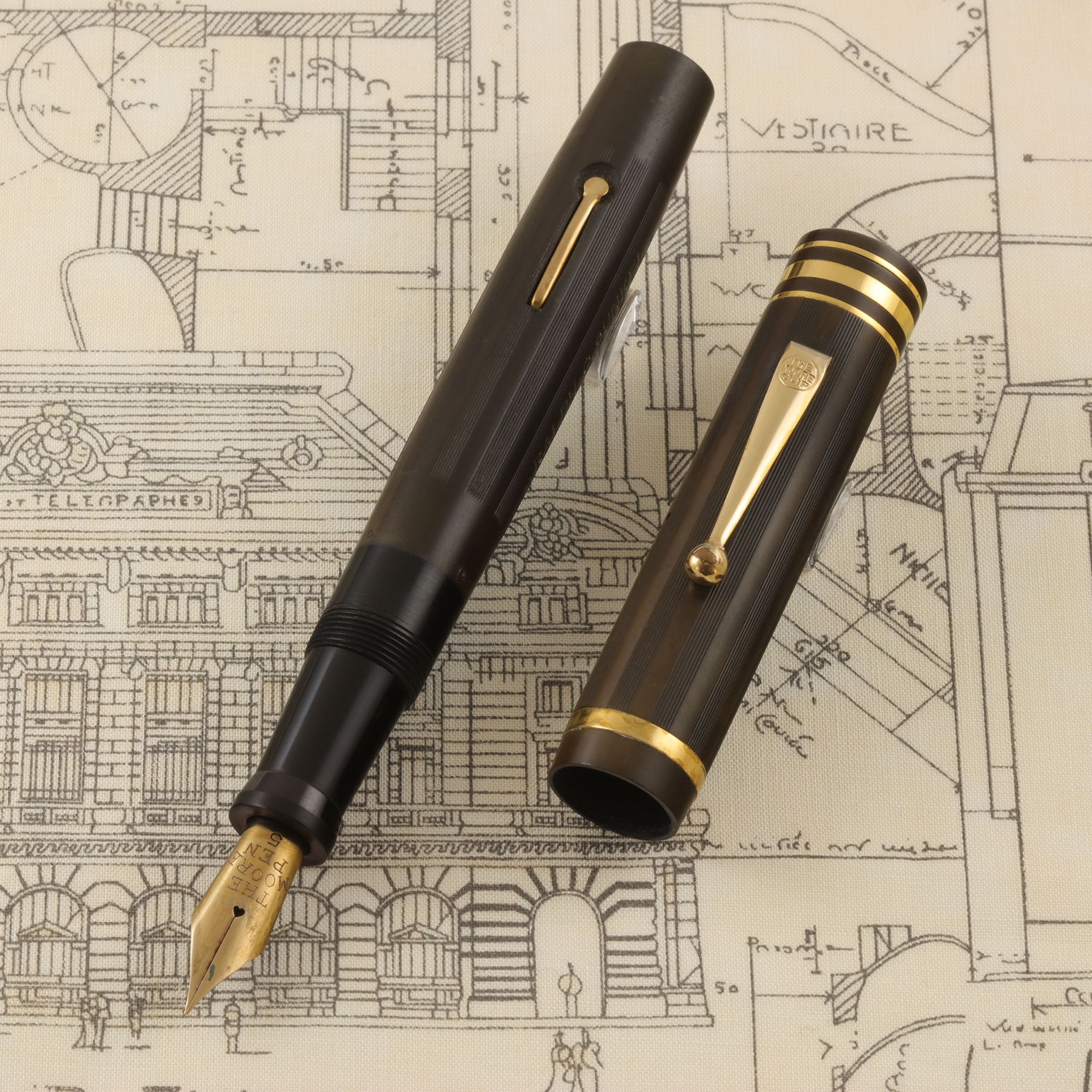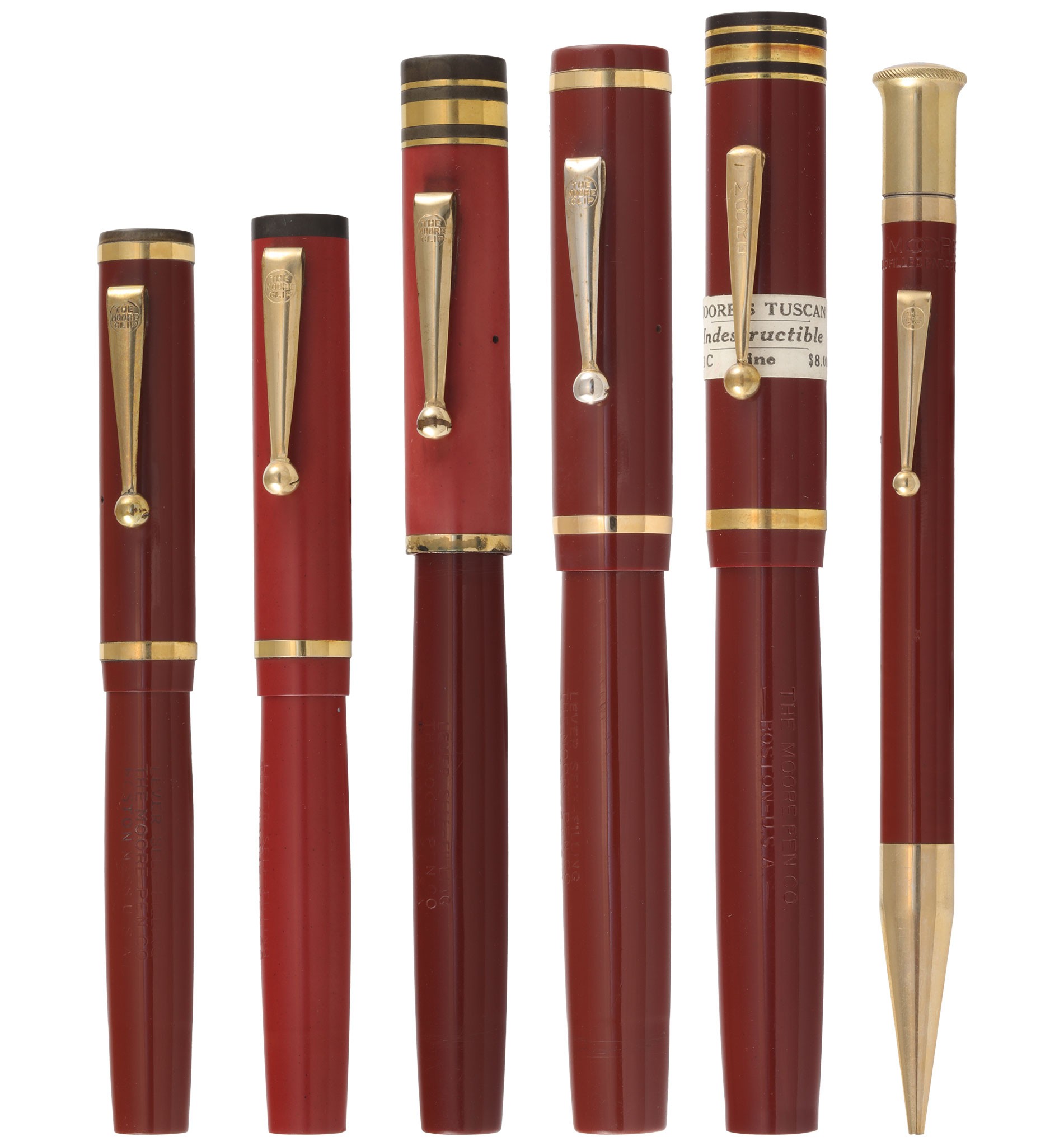The Moore Pen Company was based in Boston, Massachusetts, and made high quality fountain pens until the mid-1950s. The company began in 1899 as the American Fountain Pen Company with an excellent black hard rubber safety pen they made for nearly 30 years, known as the "Moore's Non-Leakable Fountain Pen." The idea for the Moore safety came from a musician, Morris W. Moore, but he wasn't really a businessman or capitalist. His idea was developed by W.F. Cushman, an optical salesman, who worked with W.F. Cushing, a Boston stationer, to create the American Fountain Pen Company. Their safety pen came in a variety of sizes, some with gold, gold-filled, or silver overlays for ornamentation.

Moore's Non-leakable Pen
1915 - The American Fountain Pen Company introduced their first self-filler, a chased black-hard rubber sleeve filler.

American Self-filler (Photo by Jim Mamoulides/Penhero.com)
1917 - The company changed their name to the Moore Pen Company, honoring their principal product ("Moore's Non-leakable Pen").
1917 - Moore began to produce their standard lever fillers, usually labeled L-XY, where X is the barrel size (9 - large, 8 medium, 7 small/lady's) and Y is the nib size.
 Moore L-95 (Photo by Jim Mamoulides/Penhero.com)
1920 - The Monarch and the Major are introduced. The Monarch was a larger size hard-rubber flat-top lever-filler with jade green casein end-pieces on the cap. The Major was a step smaller (although there is overlap in the pen sizes and prices) and had red casein ends. However, not all Monarchs and Majors came with casein end-pieces - they were also sold with plain hard-rubber ends. Monarchs and Majors both have nibs labelled with the model's name ("Monarch" or "Major").
Moore L-95 (Photo by Jim Mamoulides/Penhero.com)
1920 - The Monarch and the Major are introduced. The Monarch was a larger size hard-rubber flat-top lever-filler with jade green casein end-pieces on the cap. The Major was a step smaller (although there is overlap in the pen sizes and prices) and had red casein ends. However, not all Monarchs and Majors came with casein end-pieces - they were also sold with plain hard-rubber ends. Monarchs and Majors both have nibs labelled with the model's name ("Monarch" or "Major").
 Catlog entry for Monarch and Major
Catlog entry for Monarch and Major
1922 - Moore introduced the Colonial with fancy brass and hard rubber rings creating an ornamental top to the cap. They also introduced the Acme, which was similar to the Major but with a blue casein end cap (known as the "Trim"). Colonials had "The Moore Pen" nibs, while Acmes have an "Acme" label on the nib.
 L-96 Moore Colonial(Photo by Jim Mamoulides/Penhero.com)
L-96 Moore Colonial(Photo by Jim Mamoulides/Penhero.com)
1924 - The Luxor smooth hard rubber pen was introduced. These pens had a red, blue, or green Bakelite ring on the cap.
 Moore L-94 Luxor(Photo by Jim Mamoulides/Penhero.com)
Moore L-94 Luxor(Photo by Jim Mamoulides/Penhero.com)
1924 - The Tuscan line was introduced with terracotta colored red-brown hard rubber. Some Tuscans have the same ornamental cap-top as the Colonial. Between 1924 and 1926, the Tuscan line was transitioned from hard rubber to celluloid.
 Tuscans: 2nd from left is hard rubber, 3rd is hard rubber and celluloid(Jim Mamoulides/Pehnero.com)
Tuscans: 2nd from left is hard rubber, 3rd is hard rubber and celluloid(Jim Mamoulides/Pehnero.com)
1926 - Moore begins to make celluloid flat-top lever fillers. These initially come in black and dark navy blue, but jade and Tuscan versions are soon added to the line.
Moore tried to compete with the "Big Four" pen makers, although they were rarely in the same volume league. Their pen designs were rarely original, although well executed, and only with the Fingertip Model (1946-1950) did they make a leap into truly creative design. Unfortunately, this futuristic looking pen never reached a mass market, and the last years of the Moore Company were spent making mediocre aerometric fillers (the "Moore Specialist"). The company gave up pen manufacturing in 1956.